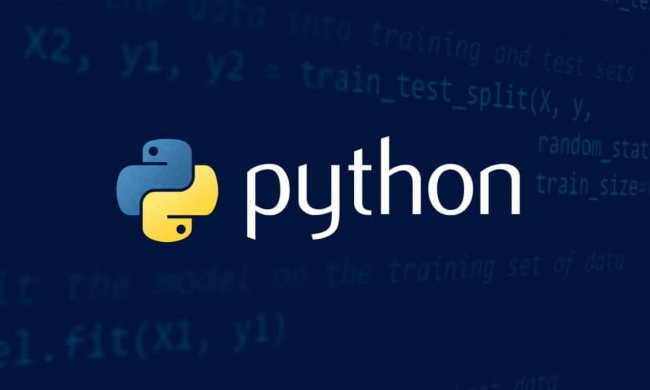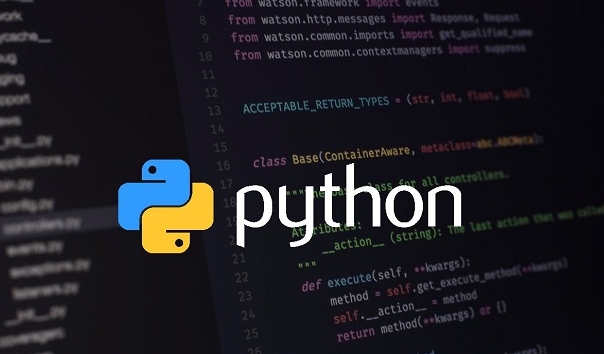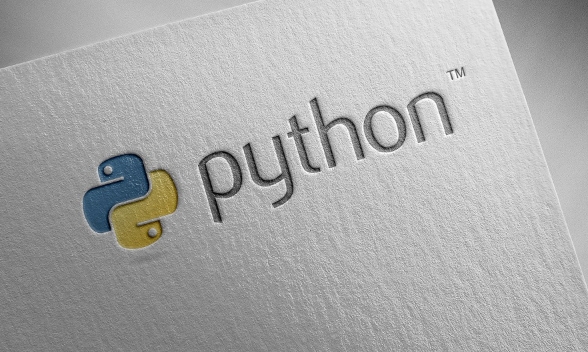 Backend Development
Backend Development
 Python Tutorial
Python Tutorial
 Connecting to and Querying Databases in Python Applications
Connecting to and Querying Databases in Python Applications
Connecting to and Querying Databases in Python Applications
Python connects and querys the database and needs to select the appropriate driver and follow the standard process. 1. Select the driver according to the database type, such as SQLite uses sqlite3, MySQL uses mysql-connector-python or PyMySQL, PostgreSQL uses psycopg2; 2. To connect to the database, you need to ensure that the service is available and the connection parameters are correctly configured. The remote database also needs to open the firewall port. It is recommended to use try-except to handle exceptions; 3. When executing the query, use parameterized statements to prevent SQL injection, execute SQL through cursors and obtain the results with fetch method, and call commit to submit transactions after the write operation; 4. After the operation is completed, the cursor and connection should be closed and the connection should be released, which can be handled automatically in conjunction with the context manager; 5. It is recommended to encapsulate connection logic, print and debug SQL statements, and small projects should be given priority to use SQLite, and complex business recommendation ORM tools to improve efficiency. Mastering these steps can effectively deal with common database operation problems.

Python provides a variety of ways to connect and query databases, suitable for a variety of scenarios from local small applications to enterprise-level systems. Whether you want to read SQLite for data analysis, or operate MySQL or PostgreSQL to build a web application backend, mastering basic database connections and query methods is the key.

Select the right database driver
Different types of databases require different libraries in Python to support connections. for example:

- SQLite : The standard library comes with
sqlite3, no additional installation is required - MySQL : Commonly used
mysql-connector-pythonorPyMySQL - PostgreSQL : It is recommended to use
psycopg2orasyncpg(asynchronous) - SQL Server : You can use
pyodbcorpymssql
Choosing the right driver is the first step. If you are not sure which one to use, you can find clues from official documentation or project dependencies. For example, Django supports SQLite by default, but the production environment is usually replaced by PostgreSQL.
Basic steps to connect to a database
Taking SQLite as an example, connecting to a database is very simple:

import sqlite3 conn = sqlite3.connect('example.db')
If it is a remote database, such as MySQL, the code will be a little more complicated:
import mysql.connector
conn = mysql.connector.connect(
host='localhost',
user='root',
password='yourpassword',
database='testdb'
)No matter which database you are connected, the following points should be paid attention to when connecting:
- Make sure the database service is started and accessible
- Check whether the username, password, and host address are correct
- If it is a remote database, confirm that the firewall allows communication to the corresponding port
When the connection fails, most drivers will throw exceptions. Remember to use try-except to wrap the connection logic for error handling.
Execute query and get results
After the connection is successful, you can create a cursor object to execute SQL statements:
cursor = conn.cursor()
cursor.execute("SELECT * FROM users WHERE age > %s", (18,))
results = cursor.fetchall()Pay attention to a few details:
- Use parameterized queries such as
%sto prevent SQL injection - After query, use
fetchall(),fetchone()orfetchmany(n)to get the data - After the operation is completed, you must call
cursor.close()andconn.close()to close the resource.
If writing operations are involved (INSERT, UPDATE, DELETE), don't forget to submit the transaction:
conn.commit()
Otherwise the changes will not take effect.
Some practical suggestions for database operations
- For frequently used connections, they can be encapsulated into a class or function to avoid duplicate code
- Automatically handle connections and cursor closures using context manager (with)
- During the development process, you can print executed SQL statements for easy debugging
- Small projects can be directly used with SQLite, making it more convenient to deploy
- Complex business recommendations to improve development efficiency with ORM (such as SQLAlchemy, Django ORM)
Basically that's it. Although database operations don't seem difficult, many problems lie in details, such as parameter format, connection configuration, transaction control, etc. Practice a few more times and be familiar with common error checking methods, you can easily deal with most scenarios.
The above is the detailed content of Connecting to and Querying Databases in Python Applications. For more information, please follow other related articles on the PHP Chinese website!

Hot AI Tools

Undress AI Tool
Undress images for free

Undresser.AI Undress
AI-powered app for creating realistic nude photos

AI Clothes Remover
Online AI tool for removing clothes from photos.

Clothoff.io
AI clothes remover

Video Face Swap
Swap faces in any video effortlessly with our completely free AI face swap tool!

Hot Article

Hot Tools

Notepad++7.3.1
Easy-to-use and free code editor

SublimeText3 Chinese version
Chinese version, very easy to use

Zend Studio 13.0.1
Powerful PHP integrated development environment

Dreamweaver CS6
Visual web development tools

SublimeText3 Mac version
God-level code editing software (SublimeText3)
 How to handle API authentication in Python
Jul 13, 2025 am 02:22 AM
How to handle API authentication in Python
Jul 13, 2025 am 02:22 AM
The key to dealing with API authentication is to understand and use the authentication method correctly. 1. APIKey is the simplest authentication method, usually placed in the request header or URL parameters; 2. BasicAuth uses username and password for Base64 encoding transmission, which is suitable for internal systems; 3. OAuth2 needs to obtain the token first through client_id and client_secret, and then bring the BearerToken in the request header; 4. In order to deal with the token expiration, the token management class can be encapsulated and automatically refreshed the token; in short, selecting the appropriate method according to the document and safely storing the key information is the key.
 Explain Python assertions.
Jul 07, 2025 am 12:14 AM
Explain Python assertions.
Jul 07, 2025 am 12:14 AM
Assert is an assertion tool used in Python for debugging, and throws an AssertionError when the condition is not met. Its syntax is assert condition plus optional error information, which is suitable for internal logic verification such as parameter checking, status confirmation, etc., but cannot be used for security or user input checking, and should be used in conjunction with clear prompt information. It is only available for auxiliary debugging in the development stage rather than substituting exception handling.
 How to iterate over two lists at once Python
Jul 09, 2025 am 01:13 AM
How to iterate over two lists at once Python
Jul 09, 2025 am 01:13 AM
A common method to traverse two lists simultaneously in Python is to use the zip() function, which will pair multiple lists in order and be the shortest; if the list length is inconsistent, you can use itertools.zip_longest() to be the longest and fill in the missing values; combined with enumerate(), you can get the index at the same time. 1.zip() is concise and practical, suitable for paired data iteration; 2.zip_longest() can fill in the default value when dealing with inconsistent lengths; 3.enumerate(zip()) can obtain indexes during traversal, meeting the needs of a variety of complex scenarios.
 What are Python type hints?
Jul 07, 2025 am 02:55 AM
What are Python type hints?
Jul 07, 2025 am 02:55 AM
TypehintsinPythonsolvetheproblemofambiguityandpotentialbugsindynamicallytypedcodebyallowingdeveloperstospecifyexpectedtypes.Theyenhancereadability,enableearlybugdetection,andimprovetoolingsupport.Typehintsareaddedusingacolon(:)forvariablesandparamete
 What are python iterators?
Jul 08, 2025 am 02:56 AM
What are python iterators?
Jul 08, 2025 am 02:56 AM
InPython,iteratorsareobjectsthatallowloopingthroughcollectionsbyimplementing__iter__()and__next__().1)Iteratorsworkviatheiteratorprotocol,using__iter__()toreturntheiteratorand__next__()toretrievethenextitemuntilStopIterationisraised.2)Aniterable(like
 Python FastAPI tutorial
Jul 12, 2025 am 02:42 AM
Python FastAPI tutorial
Jul 12, 2025 am 02:42 AM
To create modern and efficient APIs using Python, FastAPI is recommended; it is based on standard Python type prompts and can automatically generate documents, with excellent performance. After installing FastAPI and ASGI server uvicorn, you can write interface code. By defining routes, writing processing functions, and returning data, APIs can be quickly built. FastAPI supports a variety of HTTP methods and provides automatically generated SwaggerUI and ReDoc documentation systems. URL parameters can be captured through path definition, while query parameters can be implemented by setting default values for function parameters. The rational use of Pydantic models can help improve development efficiency and accuracy.
 How to test an API with Python
Jul 12, 2025 am 02:47 AM
How to test an API with Python
Jul 12, 2025 am 02:47 AM
To test the API, you need to use Python's Requests library. The steps are to install the library, send requests, verify responses, set timeouts and retry. First, install the library through pipinstallrequests; then use requests.get() or requests.post() and other methods to send GET or POST requests; then check response.status_code and response.json() to ensure that the return result is in compliance with expectations; finally, add timeout parameters to set the timeout time, and combine the retrying library to achieve automatic retry to enhance stability.
 Python variable scope in functions
Jul 12, 2025 am 02:49 AM
Python variable scope in functions
Jul 12, 2025 am 02:49 AM
In Python, variables defined inside a function are local variables and are only valid within the function; externally defined are global variables that can be read anywhere. 1. Local variables are destroyed as the function is executed; 2. The function can access global variables but cannot be modified directly, so the global keyword is required; 3. If you want to modify outer function variables in nested functions, you need to use the nonlocal keyword; 4. Variables with the same name do not affect each other in different scopes; 5. Global must be declared when modifying global variables, otherwise UnboundLocalError error will be raised. Understanding these rules helps avoid bugs and write more reliable functions.






